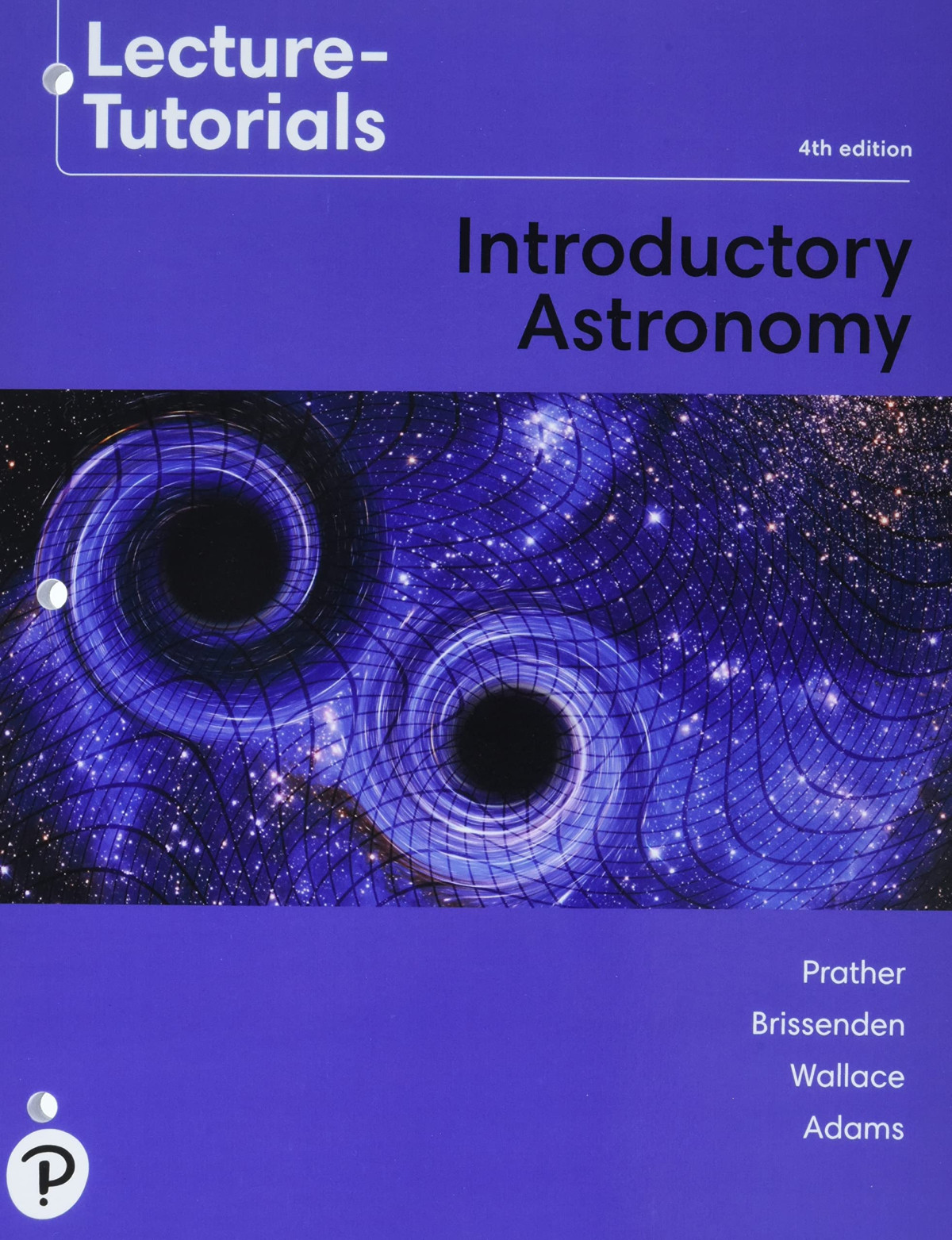

Most ebook files are in PDF format, so you can easily read them using various software such as Foxit Reader or directly on the Google Chrome browser.
Some ebook files are released by publishers in other formats such as .awz, .mobi, .epub, .fb2, etc. You may need to install specific software to read these formats on mobile/PC, such as Calibre.
Please read the tutorial at this link. https://ebooknice.com/page/post?id=faq
We offer FREE conversion to the popular formats you request; however, this may take some time. Therefore, right after payment, please email us, and we will try to provide the service as quickly as possible.
For some exceptional file formats or broken links (if any), please refrain from opening any disputes. Instead, email us first, and we will try to assist within a maximum of 6 hours.
EbookNice Team

Status:
Available0.0
0 reviews(Ebook) Lecture Tutorials for Introductory Astronomy 4th Edition by Eric Chaisson, Steve McMillan - Ebook PDF Instant Download/Delivery: 9780135807026 ,0135807026
Full download (Ebook) Lecture Tutorials for Introductory Astronomy 4th Edition after payment

Product details:
ISBN 10: 0135807026
ISBN 13: 9780135807026
Author: Eric Chaisson, Steve McMillan
(Ebook) Lecture Tutorials for Introductory Astronomy 4th Edition Table of contents:
Chapter 1 The Night Sky
Position
Motion
Part I: Looking North
Part II: Looking East
Seasonal Stars
Part I: Monthly Differences
Part II: Daily Differences
Solar vs. Sidereal Day
Part I: Solar Day
Part II: Sidereal Day
Ecliptic
Part I: Daily Motion
Part II: Monthly Changes
Part III: The Ecliptic
Part IV: Wrap-Up
Star Charts
Chapter 2 Fundamentals of Astronomy
Kepler’s Second Law
Part I: Equal Area in Equal Time Intervals
Part II: Kepler’s Second Law and the Speed of the Planets
Part III: Kepler’s Second Law and Eccentricity
Kepler’s Third Law
Newton’s Laws and Gravity
Part I: The Force of Gravity
Part II: Force–Distance Relationship
Apparent and Absolute Magnitudes of Stars
The Parsec
Part I: Stars in the Sky
Part II: What’s a Parsec?
Part III: Distances
Parallax and Distance
Spectroscopic Parallax
Part I: Magnitudes and Star Distances
Part II: Spectroscopic Parallax
Chapter 3 Nature of Light in Astronomy
Electromagnetic (EM) Spectrum of Light
Telescopes and Earth's Atmosphere
Observing the Universe with Multiple Telescopes
Luminosity, Temperature, and Size
Part I: Luminosity, Temperature, and Size
Part II: Application to the H–R Diagram
Blackbody Radiation
Part I: Spectral Curves
Part II: Blackbody Curves
Types of Spectra
Light and Atoms
Observing the Invisible—Molecular Excitations and Synchrotron Radiation
Part I: Light and Molecules
Part II: Synchrotron Radiation
Part III: Real Telescopes and Observations
Analyzing Spectra
Doppler Shift
Part I: Motion of Source
Part II: Shift in Absorption Spectra
Part III: Size of Shift and Speed
Chapter 4 Our Solar System
The Cause of Moon Phases
Predicting Moon Phases
Path of the Sun
Seasons
Part I: Earth–Sun Distance
Part II: Direct Light and Tilt
Part III: Amount of Daylight
IV: Putting It All Together
Observing Retrograde Motion
Earth’s Changing Surface
Greenhouse Effect
Formation of Planets in the Solar System
Sizing Up the Planets
Part I
Part II
Part III
Comparing the Surfaces of Planets
Part I: Fundamental Properties
Mass
Distance from the Sun
Rotation Rate
Part II: Evaluating Planetary Features
Sun Size
Part I: Earth and Moon
Part II: The Sun
Chapter 5 Stars, Galaxies, and Beyond
H–R Diagram
Star Formation and Lifetimes
Binary Stars
Detecting Extrasolar Planets with the Doppler Method
Part I: Extrasolar Planet Systems’ Properties of Motion & Doppler Shift
Part II: Evaluating Extrasolar Planet Systems
Detecting Exoplanets with the Transit Method
Stellar Evolution
Milky Way Scales
Galaxy Classification
Part I: Applying Hubble’s Classification Scheme
Part II: Understanding the Types of Galaxies
The Ages of Stars:
Dust in Galaxies:
Gas and Star Formation in Galaxies:
Dark Matter
Part I: Motions of Planets
Part II: Motions of Stars
Looking at Distant Objects
Expansion of the Universe
Hubble-Lemaître Law
Part I: Understanding Hubble-Lemaître Law and Hubble Plots
Part II: Our Universe
Making Sense of the Universe and Expansion
Part I: The Observable Universe
Part II: An Analogy for Expansion
Expansion, Lookback Times, and Distances
Detecting Exoplanets with Gravitational Microlensing
The Big Bang
People also search for (Ebook) Lecture Tutorials for Introductory Astronomy 4th Edition:
lecture tutorials for introductory astronomy free pdf
free lecture tutorials for introductory astronomy 4th edition answer key
lecture tutorials for introductory astronomy h-r diagram answers
lecture tutorials for introductory astronomy second edition
lecture tutorials for introductory astronomy prather et al. 4th edition
Tags: Eric Chaisson, Steve McMillan, Introductory Astronomy, Lecture Tutorials